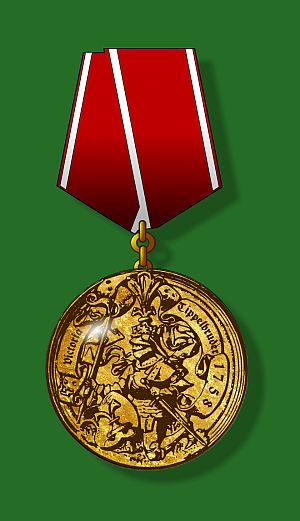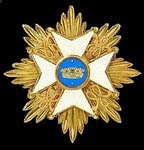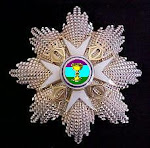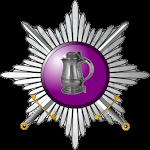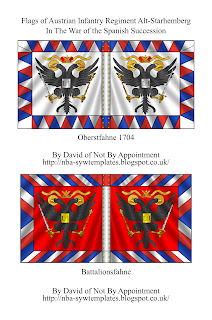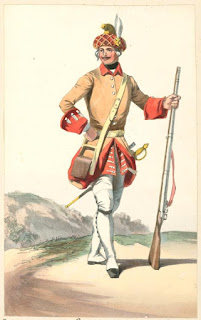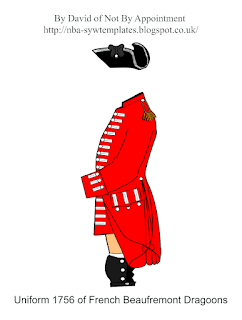The Palatinate was a poor area and was in the pay of the Allies against the French.
First raised 1688. In Imperial pay from 1705-1714.
The regiment was badly mauled and many flags were captured by the French at Speyer in 1703. We therefore know the patterns from the Triomphes Louis XIV.
The top row shows the flags as depicted in the Triomphes Louis XIV; it is surmised that the colonel's flag (oberstfahne) on the right may have been damaged and missing its central motif. At the bottom is a speculative version of what the complete flag may have been.
Strength in 1704 was:
1492 men plus 1 Fireworker, 3 Buchsenmeister, 7 Stück and 6 drivers, possibly indicating 3 regimental guns
Various strengths:
1701 Flanders: 10 companies, in 2 battalions, each company nominally 100 strong
1702 On The Lauter Lines: 10 companies and 1200 men
1704 End of year paper strength 1600
1705: Sent to Italy with a strength of 17 companies
1710: 507 strong
1712: 1st May 801 strong in Imperial pay
1712: 3-4th May 736 strong
1712: Le Quesnoy casualties: 3 officers, wounded, 12 men dead, 65 men wounded, 3 men missing
1712: Denain casualties: 1 officer dead, 3 men dead, 1 officer wounded, 2 men wounded
1712: Muster at Quaregnon[?] 638 men
1712: In Imperial Pay in Flanders: 1 battalion with 800 men
1713: Muster at Mannheim 763 men
1713: Ditto 30th June 886 men and 31st July 868 men with 170 in garrison in Mannheim/Weinheim
Actions:
1702: Capture of Lauterburg, St Remy Schloss, Kronweissenburg and Bergzabern
1702: Sieges of Mannheim and Landau; occupation of Landau
1703: Skirmish at Speyerbach [where the flags were lost to the French]
1704: Siege of Landau
1705: Capture of Munich
1705: Skirmish, detachment
1706: Battle of Turin
1706: Sieges of Tortona, Pavia and Casale
1707: Siege of Toulon
1707: Returned to Germany
1708: Siege of Lille
1709: Siege of Mons; battle of Malplaquet
1710: Siege of Douai and Aire
1712: Siege of Le Quesnoy
In 1705 the regiment had red coat with cuffs, lining and waistcoat dark green, trousers red and and buttons white (officers silver)
The uniform was probably like this in 1705:
Details from
Electorate of the Palatinate under Elector Johann Wilhelm 1690-1716 by Claus-Peter Goldberg and Robert Hall

